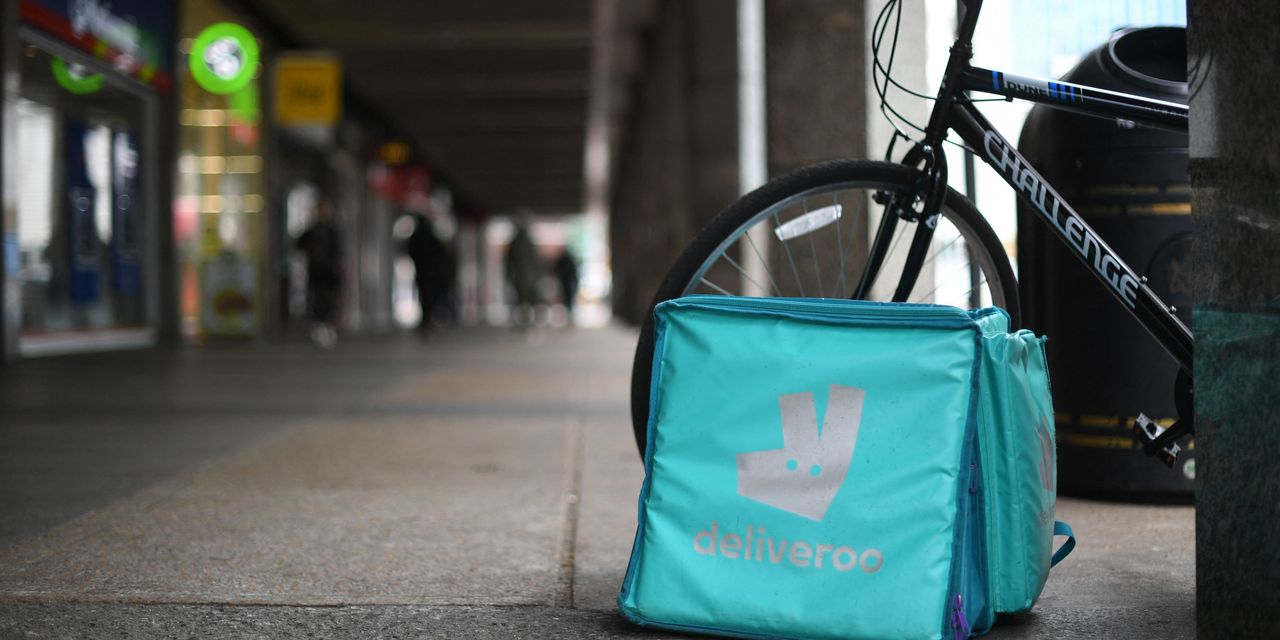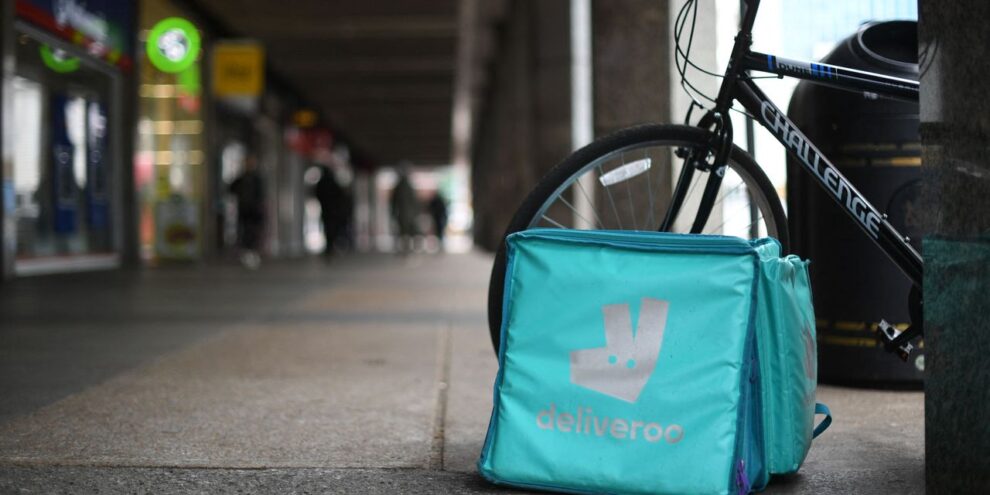
App-based “gig work” has been around for more than a decade, yet the laws around how companies should treat the people who do that work are still inconsistent — or nonexistent.
That is starting to change, though, and 2022 could be a defining year in the march toward equitable treatment of workers who deliver food, give rides and perform other tasks for companies like Uber Technologies Inc. UBER, +0.47% — which launched in 2009 — DoorDash Inc. DASH, +1.51% and Lyft Inc. LYFT, +0.58%. After California tried to set a precedent that would require companies to classify gig workers as employees, the companies fought back with Proposition 22, a big-money ballot measure that carved out exceptions for gig companies. The measure was approved by voters in 2020, but eventually was ruled unconstitutional.
That fight in California continues, while several more battles are brewing. Gig companies are trying to pass laws similar to Prop. 22 in other U.S. states, while other countries consider new rules on worker classification. There are also new regulations and court cases that could be transformative, including those addressing how much companies are telling workers they can earn, and companies’ level of transparency on delivery fees and tips.
See also: Uber brands gig companies’ efforts to reshape labor laws as ‘IC+’
Veena Dubal, a professor at UC Hastings College of the Law who studies the gig economy and has sided with gig workers, said “efforts that have been going on for a very long time [could] finally come to a head in 2022.”
The regulatory and political pressures are rising as workers inside and outside the gig economy are demanding more rights, higher wages and better working conditions; as local, state and federal governments are increasingly scrutinizing platforms’ practices and policies; and as gig companies are trying to prove to investors they can be profitable.
“The back story to all this is rising income inequality,” said Katie Wells, a postdoctoral research fellow at Georgetown University whose research centers on the Washington, D.C., gig economy. She said gig companies filled different needs, took advantage of the weakening of labor rights over the past few decades, then “exacerbated the rising inequality” because their business model is “predatory” toward their workers.
“They’re not in the business to solve social problems,” she added.
Worker classification
The core question for the gig economy is worker classification. Companies treat app-based workers as independent contractors — avoiding standard features of employment like minimum wages, taxes and other costs — but many argue workers fit the current legal definition of employees. A coalition of gig companies is trying to create a “third way” for these types of workers, while some governments are looking to shoehorn them into existing standards that would likely make them employees.
In the U.S., the National Labor Relations Board this week invited briefs, due by Feb.10, on whether it should reconsider its standard for determining workers’ independent-contractor status after some tough talk last year from U.S. Labor Secretary Marty Walsh that signaled action on the way. Also this month, the European Commission proposed new rules that could lead to the reclassification of millions of gig workers in Europe, and India’s Supreme Court agreed to hear a petition by gig workers seeking social security and other benefits afforded to other workers.
See: EU rolls out plan to improve gig-worker conditions
But after what happened in California with Prop. 22, it’s possible the key fights will be in individual states. Massachusetts could be the next big battleground if an industry-backed measure that would create a different category for gig work qualifies for the November ballot.
“Massachusetts has become the next ground zero [for gig worker classification] in the U.S., and a lot of other states are watching to see what happens,” said Shannon Liss-Riordan, a lawyer who has represented workers in numerous lawsuits against gig companies. According to her and other experts, other states that may be the gig companies’ next stops include Washington, Colorado, Illinois, New Jersey and New York.
Prop. 22, which was approved by California voters in 2020, exempts gig companies from state law and allows them to keep treating their drivers and delivery workers as independent contractors instead of employees. The Massachusetts measure could be one of the first indications of whether the companies will succeed in their goal of expanding that model elsewhere.
Worker advocates say Prop. 22 has fallen short in California: Many gig workers still complain about inadequate wages, and not qualifying for the health-insurance subsidies they were promised. The gig companies have said thousands of workers have received the subsidies since the law went into effect.
Read more about the record-breaking $200 million fight to preserve the gig economy
The European Commission’s proposal is in its early stages but could have a sweeping effect if adopted. It likely would require gig platforms like Uber and its competitors in Europe, such as Deliveroo ROO, -1.90%, to treat their drivers and couriers as “workers” entitled to a minimum wage, paid holidays, unemployment and health benefits, and more. The commission estimates that up to 4.1 million people out of the 28 million who do gig work in Europe could be reclassified as workers under the EU directive.
The proposal follows a U.K. Supreme Court decision last spring that ordered Uber to treat drivers as workers with some employment benefits, and a decision this month declaring Uber’s business model in London unlawful.
Uber did not return a request for comment about the European proposal on gig work. A DoorDash spokesman said the company is new to the European market and had no comment.
Elsewhere, a workforce advisory committee in Ontario, Canada, has recommended a third category for gig workers, like the type gig companies are seeking. “Dependent contractors” would be entitled to basic employment rights such as a minimum wage, minimum or core benefits and termination pay. The same committee has also proposed a portable-benefits plan like the one Uber started lobbying for in Canada earlier this year.
For more: With Uber and Lyft prices rising, passengers return to the original ride-hailing service — taxicabs
Ryan White, a labor lawyer in Canada, said Toronto’s government is “incredibly friendly” to business. “They’ll pitch this as, ‘We will give gig workers rights.’”
Jennifer Scott, president of Gig Workers United in Ontario, agreed: “Uber lobbies very hard, they use really well-rooted marketing language to veil what they’re doing to make it seem like what they’re doing is progressive.”
Looking at promises and transparency
Local, state and federal regulators and legislators are also looking to the promises gig companies make to prospective workers and the amount of information (and tips) they share with those who do the work. The U.S. Federal Trade Commission recently warned gig companies and others that they could be fined up to $43,792 per violation if they mislead workers about how much they can earn on their platforms.
Lois Greisman, associate director for marketing practices at the FTC, told MarketWatch in October that the gig economy was “an area of serious concern” when it comes to promises about wages.
DoorDash delivery workers say the company — which has said its “Dashers” make an average of $25 an hour working less than four hours a week — does not actually make clear how much they can earn.
“They don’t show the whole amount up front,” said Lester Oliveros, who does DoorDash deliveries in Florida’s Tampa Bay area. He said since the summer, DoorDash’s base pay has gone down to as little as $2.50 per order. The amount he sees on the app before he accepts a delivery doesn’t disclose exactly how much a customer has tipped, saying instead that the “total may be higher.”
A DoorDash spokesman said the company does this to try to give all workers an equal chance at “high-value deliveries,” while some delivery workers say it is a way to get them to take lower-paying orders.
In-depth: The pandemic has more than doubled food-delivery apps’ business. Now what?
Kristina Ashford, a DoorDash worker in Vancouver, Wash., started doing deliveries last year when the coronavirus pandemic began and her other work as a housecleaner dried up. She also said base pay is as low as $2.50 per order. And if customers don’t tip when they place an order but instead tip afterward, she has found that she sometimes doesn’t get the full tip, she added.
“I have never made $25 an hour,” she said. “There’s just no way, even when it was really busy… [considering the] wear and tear on my car, the gas, the stress, I probably made $15 an hour at the most.”
That’s about how much Oliveros has been earning on average lately: $15 an hour. He said at one point he was making about $1,000 a week working 40 hours — which would be $25 an hour — but that more recently he was making about $600 a week working the same amount of hours.
Don’t miss: How gig work widens the racial wealth gap — and what can be done about it
DoorDash has repeatedly said it is transparent about how much workers can earn on each delivery, and a spokesman again told MarketWatch that its delivery workers receive 100% of customer tips.
On the topic of transparency and tips, starting next year, food-delivery platforms such as DoorDash, Uber Eats and Grubhub GRUB, +1.88% will have to comply with a new California law that requires them to: give workers 100% of their tips; provide more information about delivery fees to their restaurant partners and customers; and not charge customers more than restaurants do.
The issues the California law addresses are similar to those in a lawsuit filed by the city of Chicago against DoorDash and Grubhub last summer. Among other things, the city’s lawsuit accused DoorDash of subsidizing its base pay to drivers with customer tips, which the company denies.
Investor concerns
The many regulatory issues facing gig companies in the coming year are concerning to investment analysts — up to a point. The business model has been threatened before and has managed to survive, but there are legitimate questions about companies’ ability to be profitable even under current constrictions, much less if new regulations are established and enforced.
Tom White, an analyst for D.A. Davidson, agrees that the gig economy could be in for some important developments in 2022.
“Whether or not it’s a watershed year, I don’t know,” he said, adding that new regulatory issues pop up all the time. For example, he said, the pandemic sparked the emergency delivery-fee caps that some cities are trying to make permanent.
Longer term, increasing regulatory pressure could prompt gig companies to raise prices, possibly reducing their size or opportunities, White said. Or they could be forced to exit certain markets.
But “they do have a little bit of pricing power, and consumers keep using the platforms,” he said.








